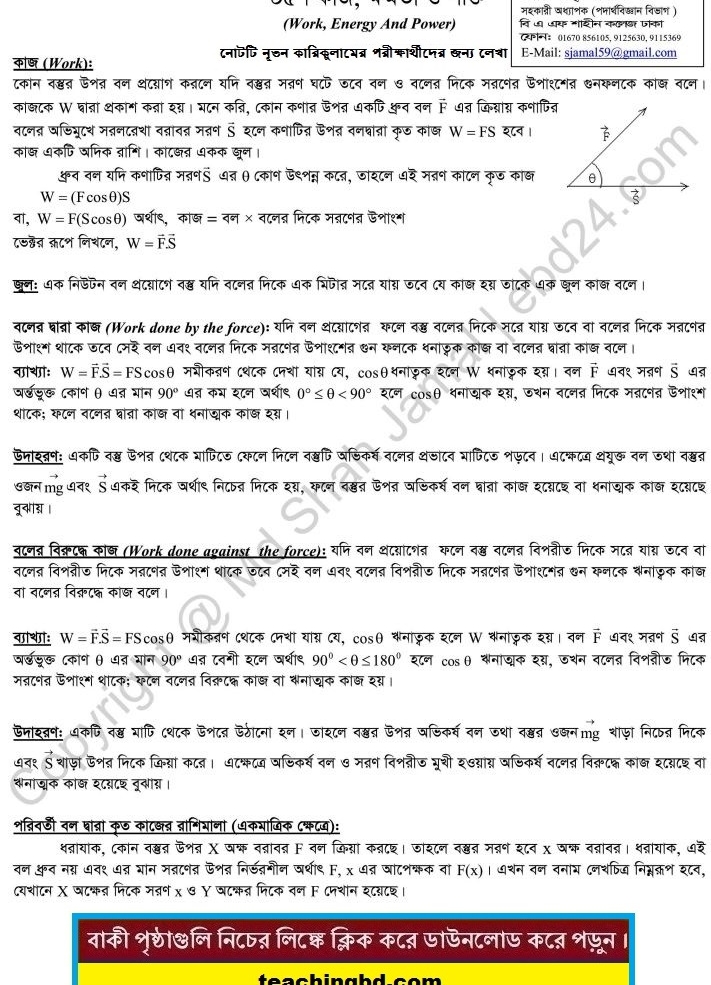Work: Work refers to an activity involving a force and movement in the directon of the force. A force of 20 newtons pushing an object 5 meters in the direction of the force does 100 joules of work.
Energy: Energy is the capacity for doing work. You must have energy to accomplish work – it is like the “currency” for performing work. To do 100 joules of work, you must expend 100 joules of energy.
Power: Power is the rate of doing work or the rate of using energy, which are numerically the same. If you do 100 joules of work in one second (using 100 joules of energy), the power is 100 watts.
Work, Energy And Power Details with Diagram


Click Here To Download the Note Work, Energy And Power Details with Diagram
Work: Work refers to an activity involving a force and movement in the directon of the force. A force of 20 newtons pushing an object 5 meters in the direction of the force does 100 joules of work.
Energy: Energy is the capacity for doing work. You must have energy to accomplish work – it is like the “currency” for performing work. To do 100 joules of work, you must expend 100 joules of energy.
Power: Power is the rate of doing work or the rate of using energy, which are numerically the same. If you do 100 joules of work in one second (using 100 joules of energy), the power is 100 watts.
The change in the kinetic energy of an object is equal to the net work done on the object.
This fact is referred to as the Work-Energy Principle and is often a very useful tool in mechanics problem solving. It is derivable from conservation of energy and the application of the relationships for work and energy, so it is not independent of the conservation laws. It is in fact a specific application of conservation of energy. However, there are so many mechanical problems which are solved efficiently by applying this principle that it merits separate attention as a working principle.
For a straight-line collision, the net work done is equal to the average force of impact times the distance traveled during the impact.
Average impact force x distance traveled = change in kinetic energy
If a moving object is stopped by a collision, extending the stopping distance will reduce the average impact force.
teachingbd24.com is such a website where you would get all kinds of necessary information regarding educational notes, suggestions and questions’ patterns of school, college and madrasahs. Particularly you will get here special notes of physics that will be immensely useful to both students and teachers. The builder of the website is Mr. Md. Shah Jamal Who has been serving for 30 years as an asst. Professor of BAF Shaheen College. He expects that this website will meet up all the needs of Bengali version learners /students. He has requested both concerned students and teachers to spread this website home and abroad.
Discover more from Teaching BD
Subscribe to get the latest posts sent to your email.